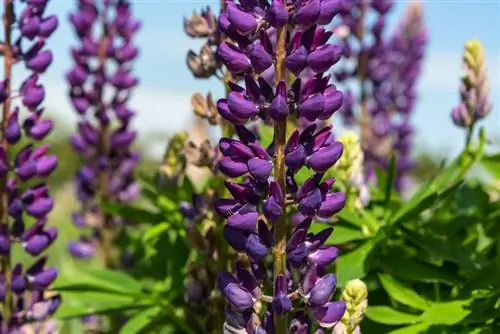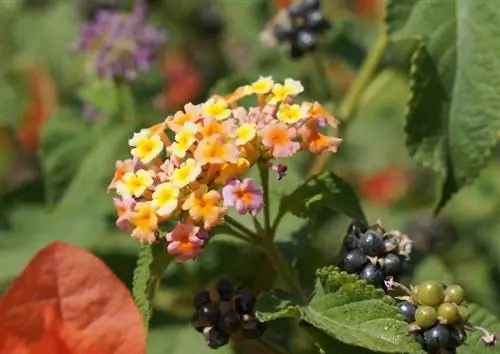- Author admin [email protected].
- Public 2023-12-16 16:46.
- Last modified 2025-01-23 11:22.
There are several types of anemones that can brighten up spring, summer or autumn with their flowers. Therefore, at least one specimen grows in almost every garden. However, their popularity does not prove that the plants are harmless to humans.

How poisonous are the anemones?
Since the plant sap contains the toxin protoanemonin,all anemones are poisonous in all parts,but to varying degrees. The autumn anemone, for example, is considered slightly poisonous. Protect your hands with gloves during all care work and keep animals away.
What plants does the anemone belong to?
The anemones, scientifically known as anemones, are a separate genus of around 150 species from the familyRanunculaceae Many species, such as the garden anemone (Anemone coronaria) and the Balkan anemone (Anemone blanda), have become popular ornamental plants due to their beauty and abundance of flowers. The buttercup family is considered poisonous.
Are all anemones poisonous?
The buttercup family leaves no room for deviation when it comes to toxicity. Yes, even the beautiful anemones are all poisonous. But there are crucial differences between the species. Autumn anemones are considered only slightly poisonous, while the wood anemone, for example, is classified as poisonous.
What toxin does anemone contain?
Anemones contain a substance calledProtoanemonin The oily liquid is contained in the plant sap, which runs through the entire plant. Therefore, anemones are poisonous in all parts. It is interesting that the conversion product anemonin has antispasmodic, pain-relieving and antibiotic effects.
What danger does poisonous anemone pose?
Larger amounts of poison can be fatal to humans. But since no one would eat anemone, especially since the substance tastes very bitter, there ispractically no great risk of poisoning for them In addition, the toxic substance only comes out when the plant is cut, injured or begins to wilt. These pets are in acute danger to their lives if they eat the anemone:
- Hamster
- Dogs
- Rabbit
- Cats
- Guinea pig
- Horses
What do I have to pay attention to when cultivating anemones?
After planting, perennials need to be cut regularly, which causes the plant to release sap. Tuberous anemones are not always sufficiently hardy and must be dug up in autumn. Both activities involve the risk of coming into contact with the toxic substance. It is therefore best to protect yourself during all care workwith gloves and, if necessary, long clothing. Overwinter bulbous anemones out of the reach of pets and small children.
Tip
If pets show symptoms of poisoning, go to the vet immediately
If an animal has ingested the toxic protoanemonin, it can show various symptoms of poisoning, from vomiting and diarrhea to symptoms of paralysis. No home remedy is guaranteed to help. Take the animal to a veterinary clinic or veterinary practice immediately.






